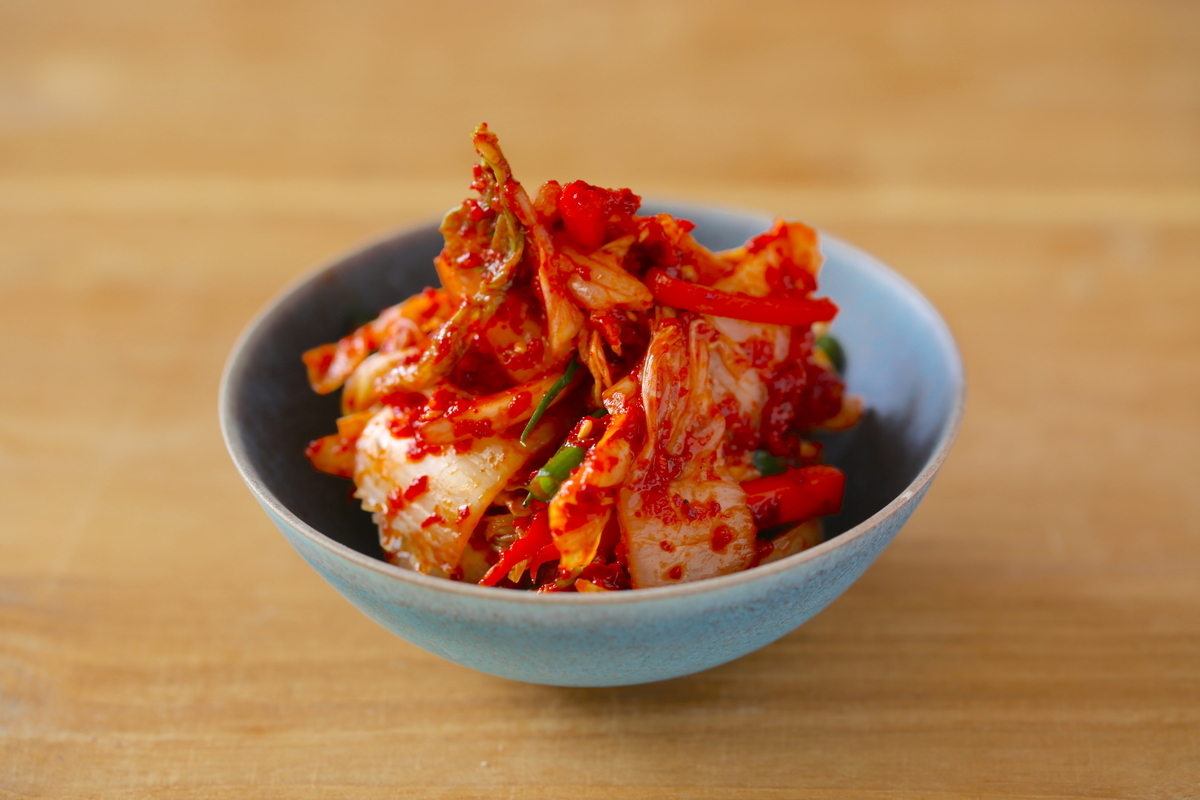Here’s a simple recipe for making traditional Korean kimchi in English. It’s a fun and rewarding process!
Homemade Kimchi Recipe
Ingredients
- 1 napa cabbage (about 2 kg / 4.4 lbs)
- 1/4 cup salt (for soaking the cabbage)
- 1 liter (4 cups) water (for soaking the cabbage)
- 1/4 cup rice flour (optional, for kimchi paste)
- 1/4 cup fish sauce (or soy sauce for a vegetarian version)
- 2 tbsp salted shrimp (optional, for extra flavor)
- 3 tbsp Korean red chili flakes (adjust to taste)
- 1 tbsp sugar (optional, for sweetness)
- 3 cloves garlic, minced
- 1 tbsp ginger, minced
- 1/2 medium onion, finely chopped
- 4 green onions, chopped
- 1 medium radish (daikon), julienned
Instructions
- Prepare the Cabbage:
- Cut the napa cabbage into quarters lengthwise and remove the core. Chop into bite-sized pieces or leave as large leaves, depending on your preference.
- Dissolve salt in water, then soak the cabbage pieces for 2-3 hours. Turn the cabbage occasionally to ensure even soaking. It should soften slightly.
- Rinse and Drain:
- After soaking, rinse the cabbage thoroughly with cold water 2-3 times to remove excess salt. Drain well.
- Make the Kimchi Paste:
- In a small pot, mix 1/4 cup rice flour with 1 cup water (if using) and cook over low heat until it thickens into a paste. Let it cool.
- Combine the cooled rice paste, fish sauce, chili flakes, sugar, garlic, ginger, onion, and salted shrimp (if using) in a large bowl. Mix well to create a spicy kimchi paste.
- Add Vegetables:
- Add the julienned radish and green onions to the kimchi paste. Mix well.
- Combine Cabbage and Paste:
- Wearing gloves to protect your hands from the chili, mix the drained cabbage with the kimchi paste. Massage the paste into the cabbage, ensuring every piece is coated.
- Pack and Ferment:
- Transfer the kimchi to a clean, airtight container or jar. Press down firmly to remove air pockets. Leave about 1 inch (2.5 cm) of space at the top for expansion.
- Leave the jar at room temperature for 1-2 days to ferment. Then store it in the refrigerator.
- Taste and Enjoy:
- After 2-3 days in the fridge, your kimchi will develop a tangy flavor. You can eat it fresh or let it ferment longer for a stronger taste.
Tips:
- Adjust the chili flakes to your spice preference.
- Fermentation time depends on temperature: warmer temperatures speed up fermentation, while cooler ones slow it down.
- Kimchi is versatile! Use it as a side dish, in stews, fried rice, or even sandwiches.
Enjoy your homemade kimchi! 🥬✨






